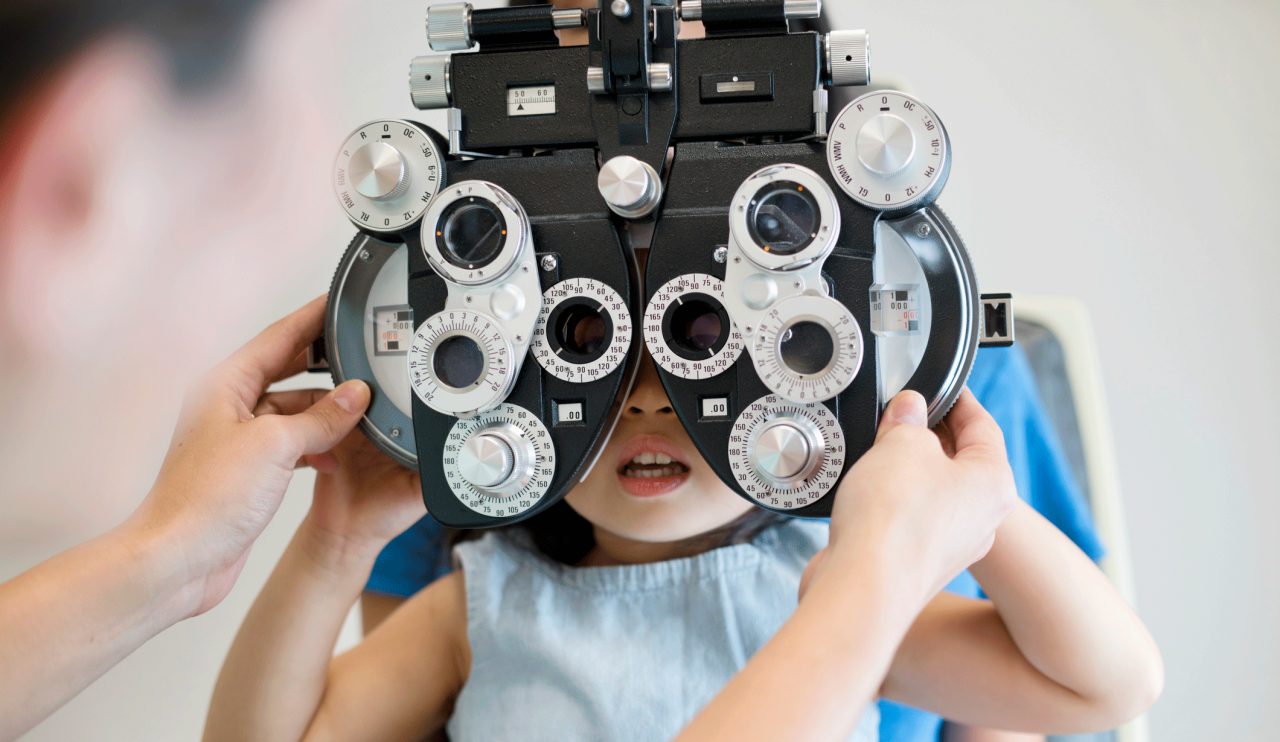Signs Your Child Needs an Eye Exam

Children can’t always understand or communicate they have abnormal vision. That’s why it’s important to recognize important signs your child needs an eye exam.
As an adult, when you have a change in vision or realize something is wrong with your eyes, it’s clear an eye exam is in order. But children — especially those in their preschool and early school years — may not know how to express they have a vision problem. In fact, according to vision expert Marcela Frazier, OD, University of Alabama (UAB) associate professor of ophthalmology, kids may grow up adapting to vision issues, until it’s time for them to learn to read.
“More often than not, vision problems go unnoticed until children begin school,” Frazier explains. “When they get into school and start reading and learning, that is when parents and teachers begin to notice certain problems.”
So, when you consider all the things your child needs for school, from clothes to school supplies, it’s a good idea to add a vision screening to the list, especially if there are signs your child needs an eye exam.
YOU MIGHT ALSO LIKE: Our Children and Teen Care section
Why you should never ignore signs your child needs an eye exam
A comprehensive eye exam can detect a variety of eye conditions, including some that, if left untreated, can result in damaged vision or even a loss of vision in later years.
Common conditions that can be corrected with glasses include astigmatism and nearsightedness. Astigmatism, marked by blurred or distorted vision at all distances, can cause headaches, squinting, and eyestrain. It’s possible to have mild astigmatism and not know it. This is especially true for children, who may not be aware their difficulty seeing is anything other than normal, the National Eye Institute (NEI) points out.
Nearsightedness, also known as myopia, is a common type of refractive error that results in close objects appearing clear, while objects at a distance are blurred. Although nearsightedness can affect both children and adults, it’s often diagnosed in children between 8 and 12 years of age, and may worsen during their teen years, according to the NEI.
Amblyopia, the most common cause of visual impairment among children, is marked by one eye not focusing as clearly as the other eye. Often caused by a misalignment of the eyes, the condition affects two to three of every 100 children. It can be treated successfully, but if not recognized and addressed early in childhood, amblyopia and strabismus (where one eye is “crossed”) can cause serious vision problems later on.
Learn signs your child needs an eye exam
“Vision isn’t the first culprit parents think of when their child is struggling in school, but it can be playing a part in their child’s poor school or sports performance,” Frazier emphasizes.
Warning signs your child needs an eye exam:
- Recurrent headaches. When kids strain their eyes to focus, headaches often result.
- Eye fatigue after reading. Symptoms of eye fatigue include burning, itching, or tired eyes and may be difficult to notice in a child, UAB vision experts point out. However, if your child tries to avoid reading activities or is falling behind in reading comprehension, eye fatigue may be the cause.
- Poor sports performance. Of course, some kids are more talented at certain sport than others. But an untreated vision problem can cause problems in sports and physical education activities due to poor eye-hand coordination, an inability to focus, and poor depth perception.
- Squinting or closing one eye. Squinting isn’t harmful, but it can be a warning sign your child needs glasses. Squinting is an attempt to enhance focus that is blurry.
- Blinking or rubbing eyes. If your child rubs his or her eyes while trying to concentrate on an activity (especially when reading), it may indicate a vision problem.
- Holding books or electronic devices or books too close to eyes. If a child has to lean close to read text or to watch TV, it may mean the youngster has nearsightedness.
Bottom line? Don’t hesitate to have your child’s vision checked
Although a screening at a pediatrician’s office is important to check for vision problems, it’s valuable to understand some serious eye problems can’t be spotted without a full, dilated eye exam by an optician or ophthalmologist, according to pediatric optometrist Sarah Lee, OD, assistant professor in the UAB Department of Ophthalmology.
If vision problems run in your family, or you have reason to believe your child is experiencing undiagnosed vision problems, ask for a referral to an eye specialist.
“Children can be seen as early as six months, or even earlier if a problem is suspected. If there is a family history of any eye conditions, such as strabismus (eye turn), amblyopia (lazy eye), or refractive error (needing glasses), a full eye exam is recommended to ensure the child’s vision and ocular health are normal,” Lee advises.
Updated:
March 11, 2020
Reviewed By:
Janet O’Dell